Analysis of Google's Communication Methods: A Detailed Report
VerifiedAdded on 2023/04/22
|12
|532
|277
Report
AI Summary
This report examines Google's communication strategies, focusing on data collection, formatting, storage, and dissemination methods. The report details how Google gathers information through customer interactions and other methods, then formats it for various purposes. It also covers data storage techniques and the dissemination of information through various media, including electronic and oral channels. The report highlights the importance of choosing the right media for effective communication and emphasizes the role of internal sources in communicating with the public. References include academic sources on data collection, information retrieval, and knowledge management.
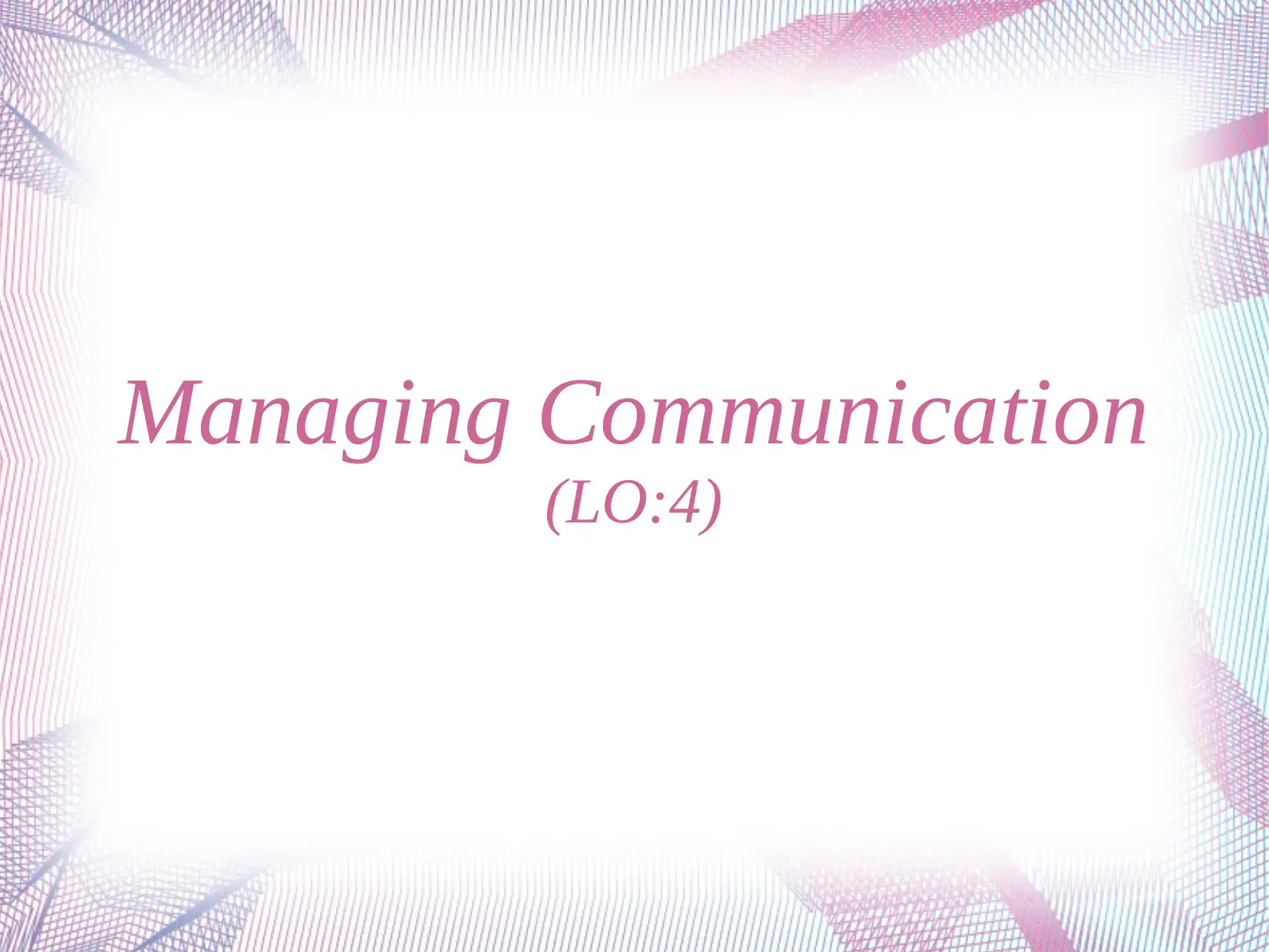
Managing Communication
(LO:4)
(LO:4)
Paraphrase This Document
Need a fresh take? Get an instant paraphrase of this document with our AI Paraphraser
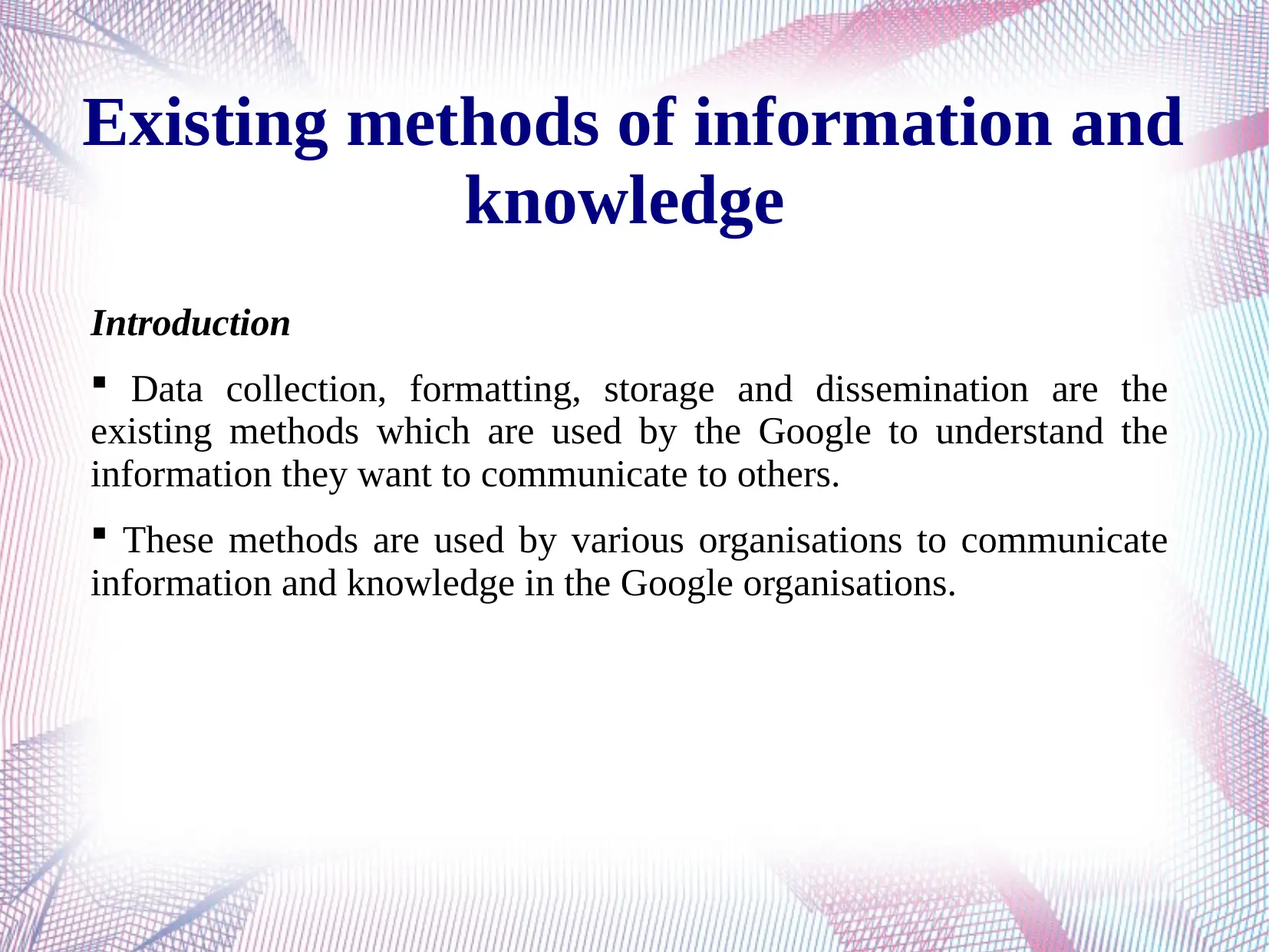
Existing methods of information and
knowledge
Introduction
Data collection, formatting, storage and dissemination are the
existing methods which are used by the Google to understand the
information they want to communicate to others.
These methods are used by various organisations to communicate
information and knowledge in the Google organisations.
knowledge
Introduction
Data collection, formatting, storage and dissemination are the
existing methods which are used by the Google to understand the
information they want to communicate to others.
These methods are used by various organisations to communicate
information and knowledge in the Google organisations.
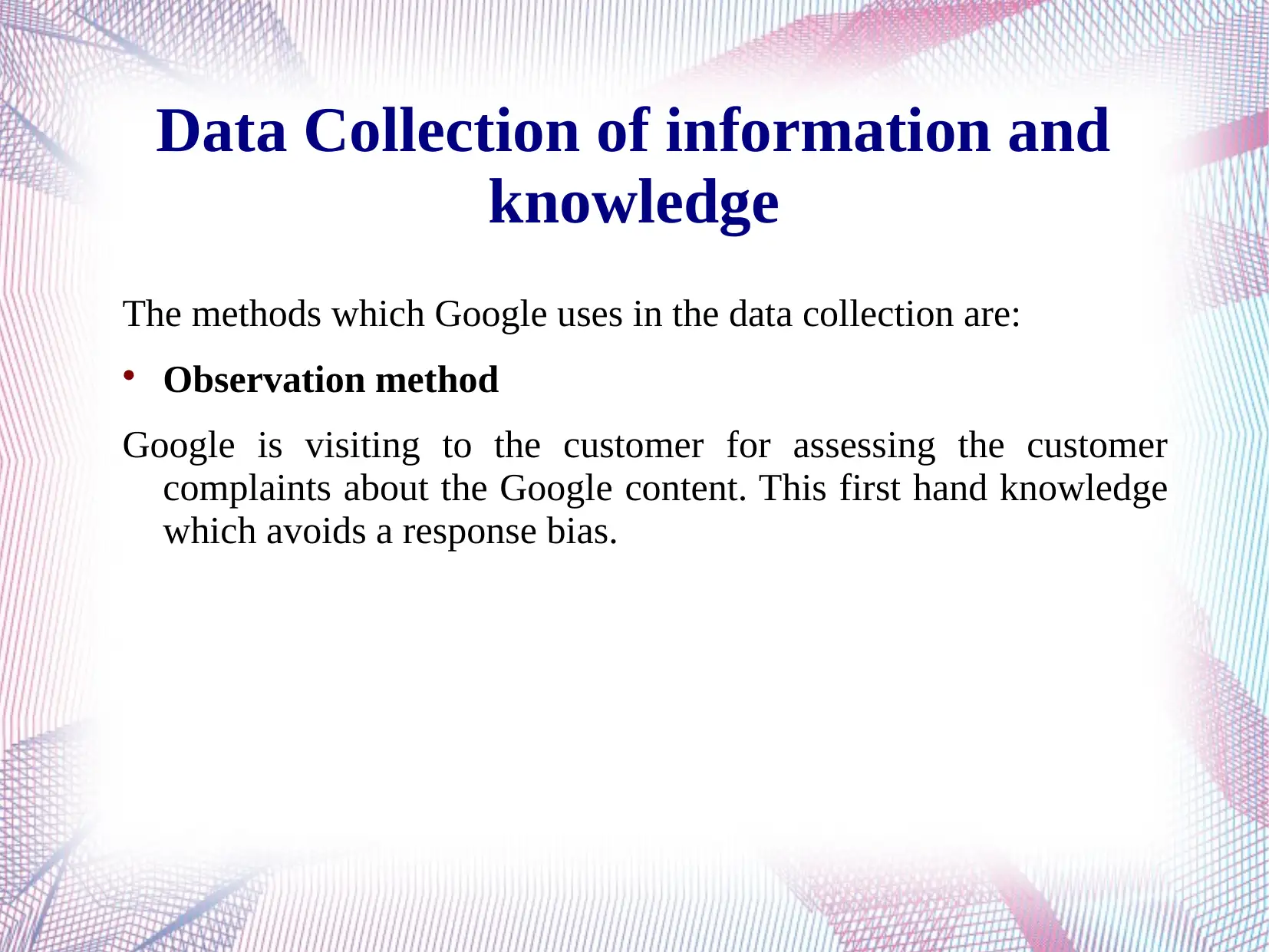
Data Collection of information and
knowledge
The methods which Google uses in the data collection are:
Observation method
Google is visiting to the customer for assessing the customer
complaints about the Google content. This first hand knowledge
which avoids a response bias.
knowledge
The methods which Google uses in the data collection are:
Observation method
Google is visiting to the customer for assessing the customer
complaints about the Google content. This first hand knowledge
which avoids a response bias.
⊘ This is a preview!⊘
Do you want full access?
Subscribe today to unlock all pages.

Trusted by 1+ million students worldwide
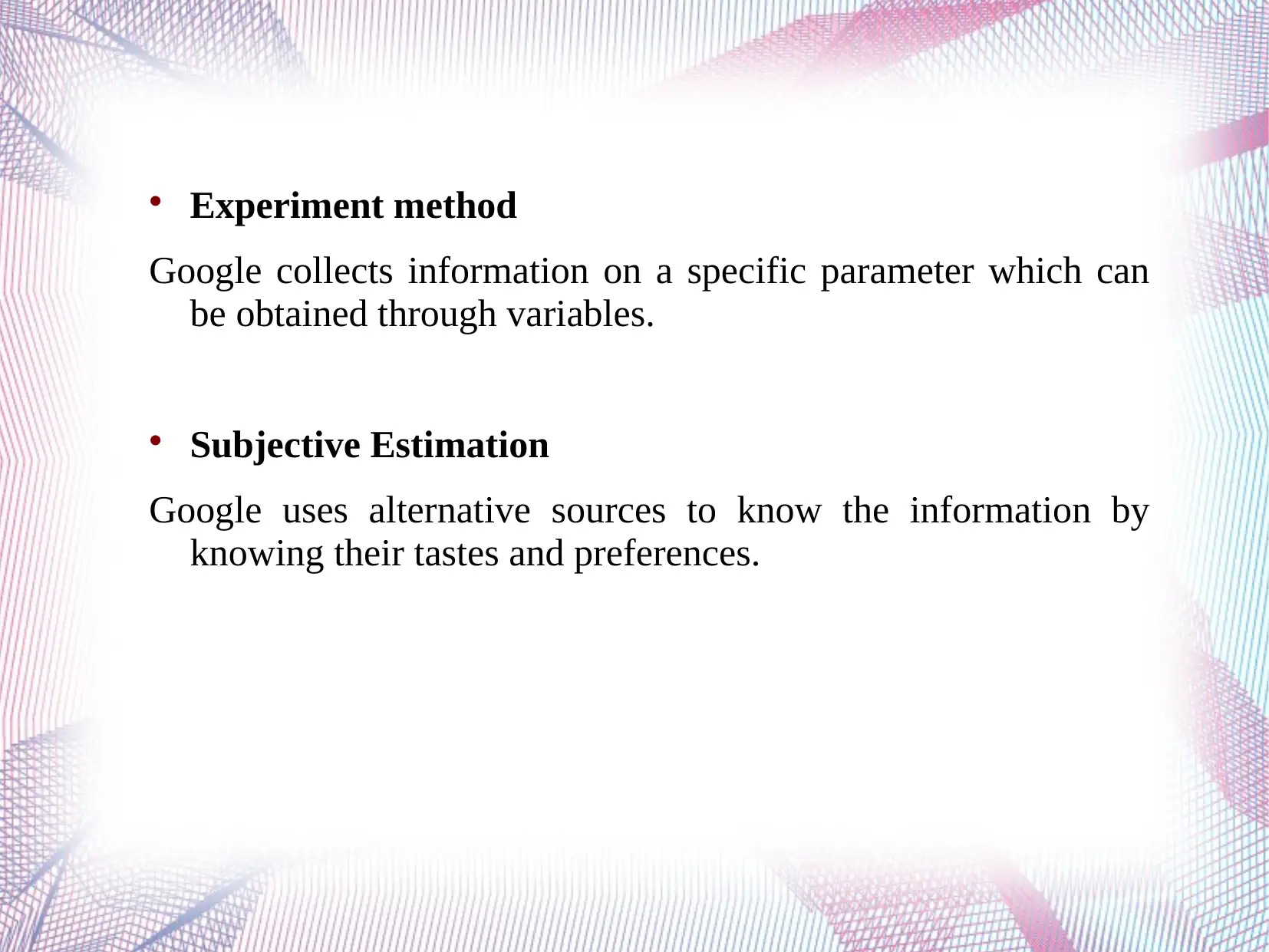
Experiment method
Google collects information on a specific parameter which can
be obtained through variables.
Subjective Estimation
Google uses alternative sources to know the information by
knowing their tastes and preferences.
Google collects information on a specific parameter which can
be obtained through variables.
Subjective Estimation
Google uses alternative sources to know the information by
knowing their tastes and preferences.
Paraphrase This Document
Need a fresh take? Get an instant paraphrase of this document with our AI Paraphraser
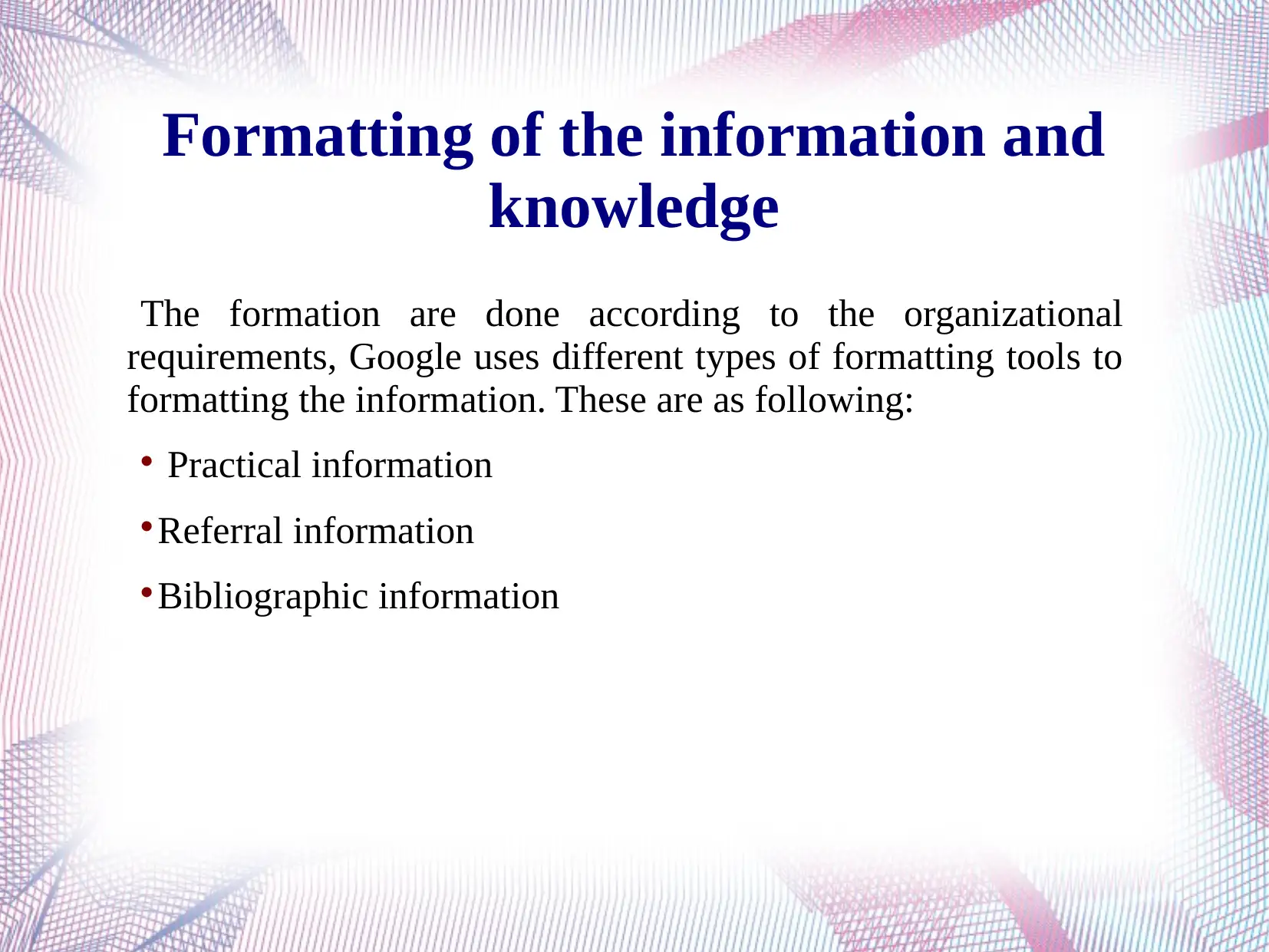
Formatting of the information and
knowledge
The formation are done according to the organizational
requirements, Google uses different types of formatting tools to
formatting the information. These are as following:
Practical information
Referral information
Bibliographic information
knowledge
The formation are done according to the organizational
requirements, Google uses different types of formatting tools to
formatting the information. These are as following:
Practical information
Referral information
Bibliographic information

Statistical data
Analytical information
Consolidating information
Analytical information
Consolidating information
⊘ This is a preview!⊘
Do you want full access?
Subscribe today to unlock all pages.

Trusted by 1+ million students worldwide

Storage of information and knowledge
After collecting and formatting data, storage method takes
place in which relevant and updated information should be
stored by the Google.
Storage is concern to easy access and easy retrieval of
information according to the requirements.
After collecting and formatting data, storage method takes
place in which relevant and updated information should be
stored by the Google.
Storage is concern to easy access and easy retrieval of
information according to the requirements.
Paraphrase This Document
Need a fresh take? Get an instant paraphrase of this document with our AI Paraphraser
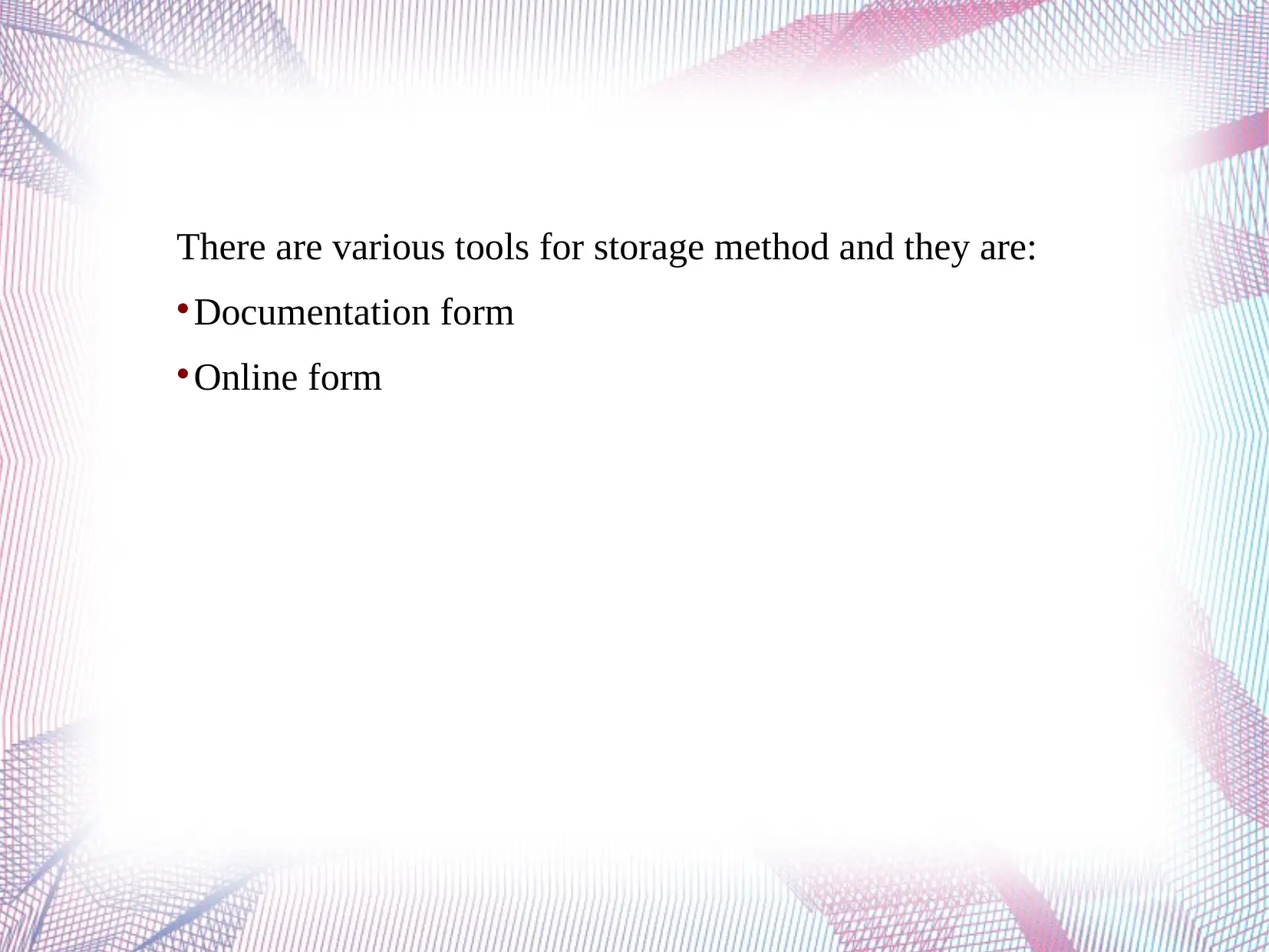
There are various tools for storage method and they are:
Documentation form
Online form
Documentation form
Online form
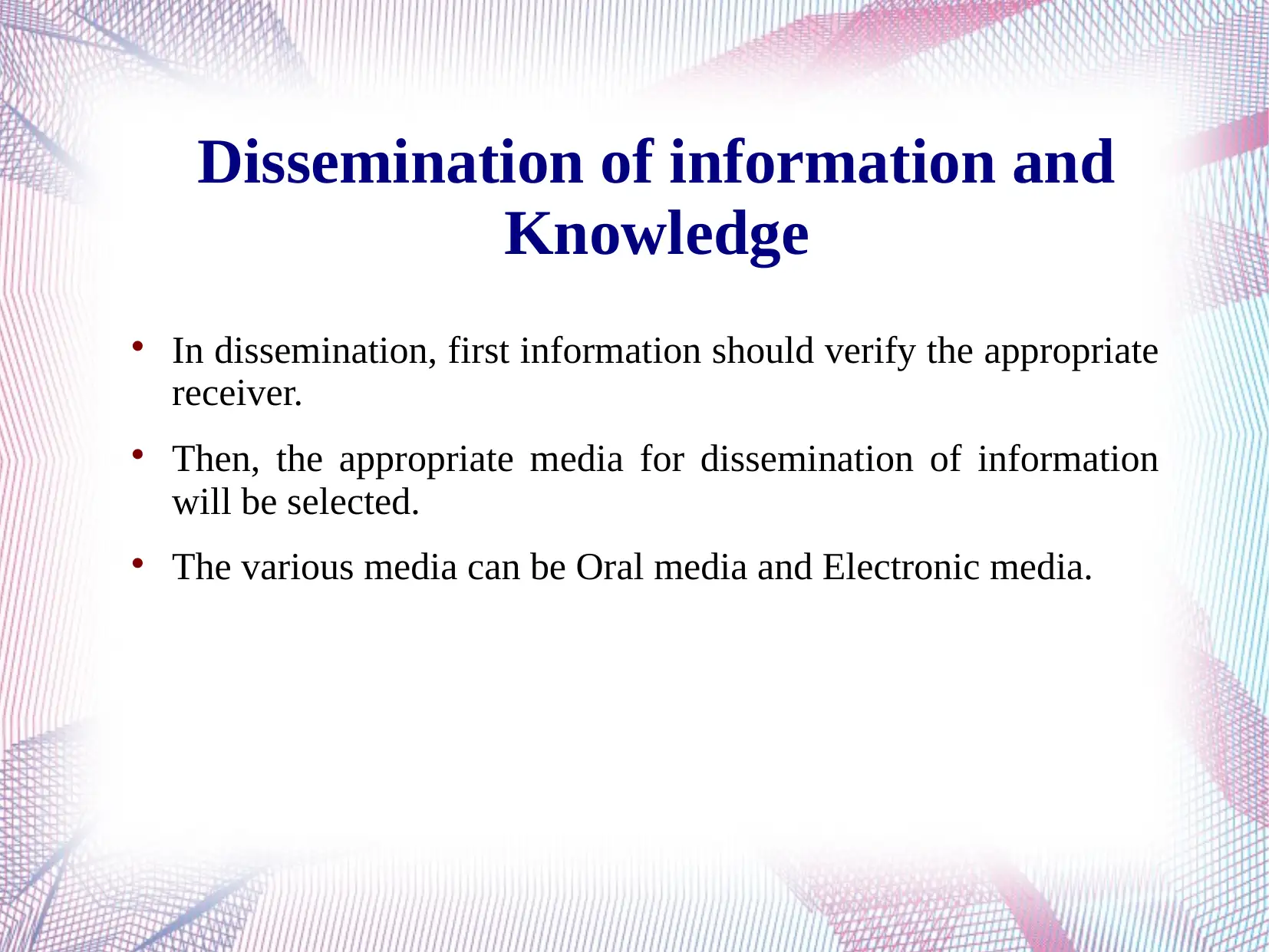
Dissemination of information and
Knowledge
In dissemination, first information should verify the appropriate
receiver.
Then, the appropriate media for dissemination of information
will be selected.
The various media can be Oral media and Electronic media.
Knowledge
In dissemination, first information should verify the appropriate
receiver.
Then, the appropriate media for dissemination of information
will be selected.
The various media can be Oral media and Electronic media.
⊘ This is a preview!⊘
Do you want full access?
Subscribe today to unlock all pages.

Trusted by 1+ million students worldwide
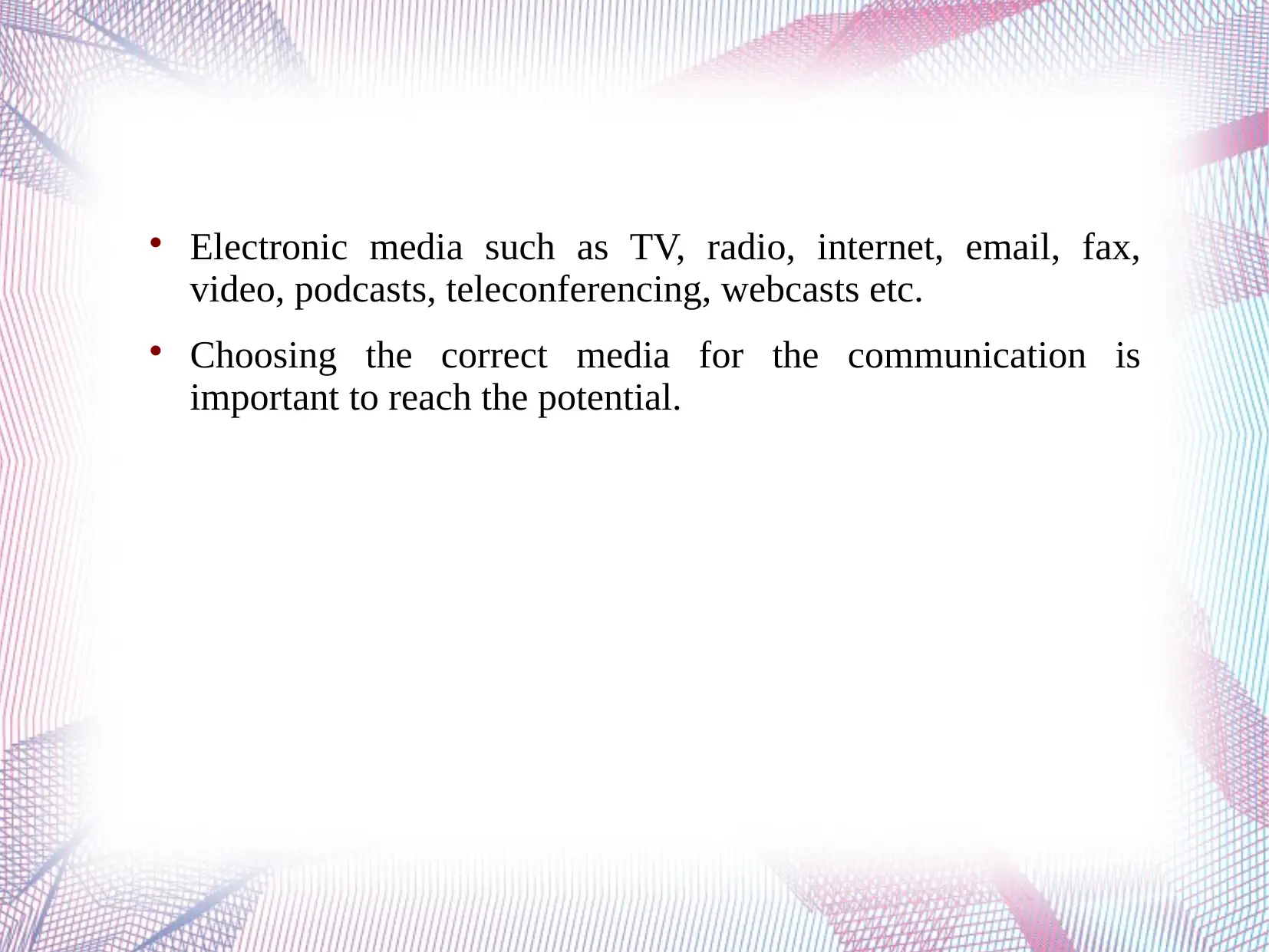
Electronic media such as TV, radio, internet, email, fax,
video, podcasts, teleconferencing, webcasts etc.
Choosing the correct media for the communication is
important to reach the potential.
video, podcasts, teleconferencing, webcasts etc.
Choosing the correct media for the communication is
important to reach the potential.
Paraphrase This Document
Need a fresh take? Get an instant paraphrase of this document with our AI Paraphraser
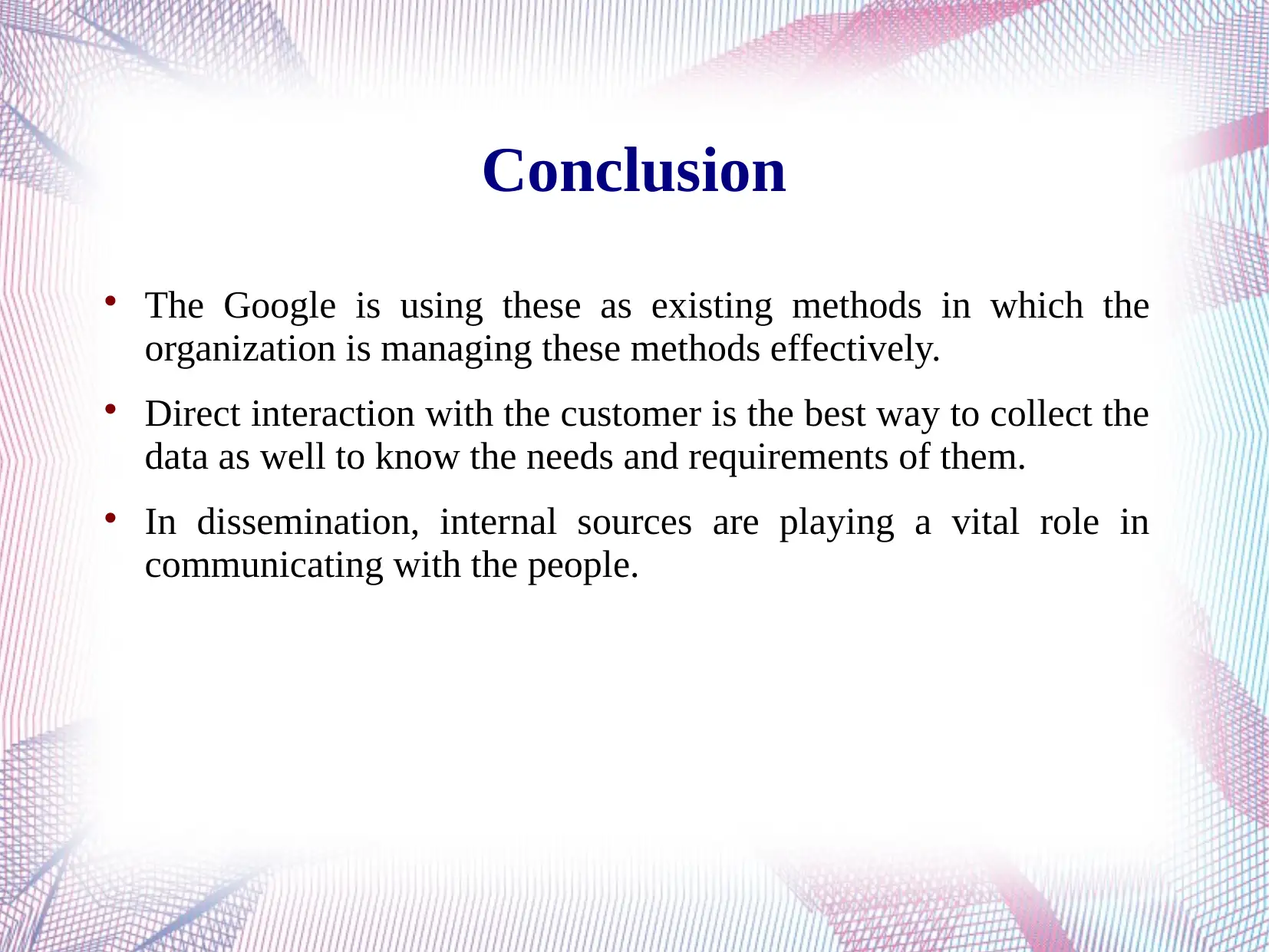
Conclusion
The Google is using these as existing methods in which the
organization is managing these methods effectively.
Direct interaction with the customer is the best way to collect the
data as well to know the needs and requirements of them.
In dissemination, internal sources are playing a vital role in
communicating with the people.
The Google is using these as existing methods in which the
organization is managing these methods effectively.
Direct interaction with the customer is the best way to collect the
data as well to know the needs and requirements of them.
In dissemination, internal sources are playing a vital role in
communicating with the people.
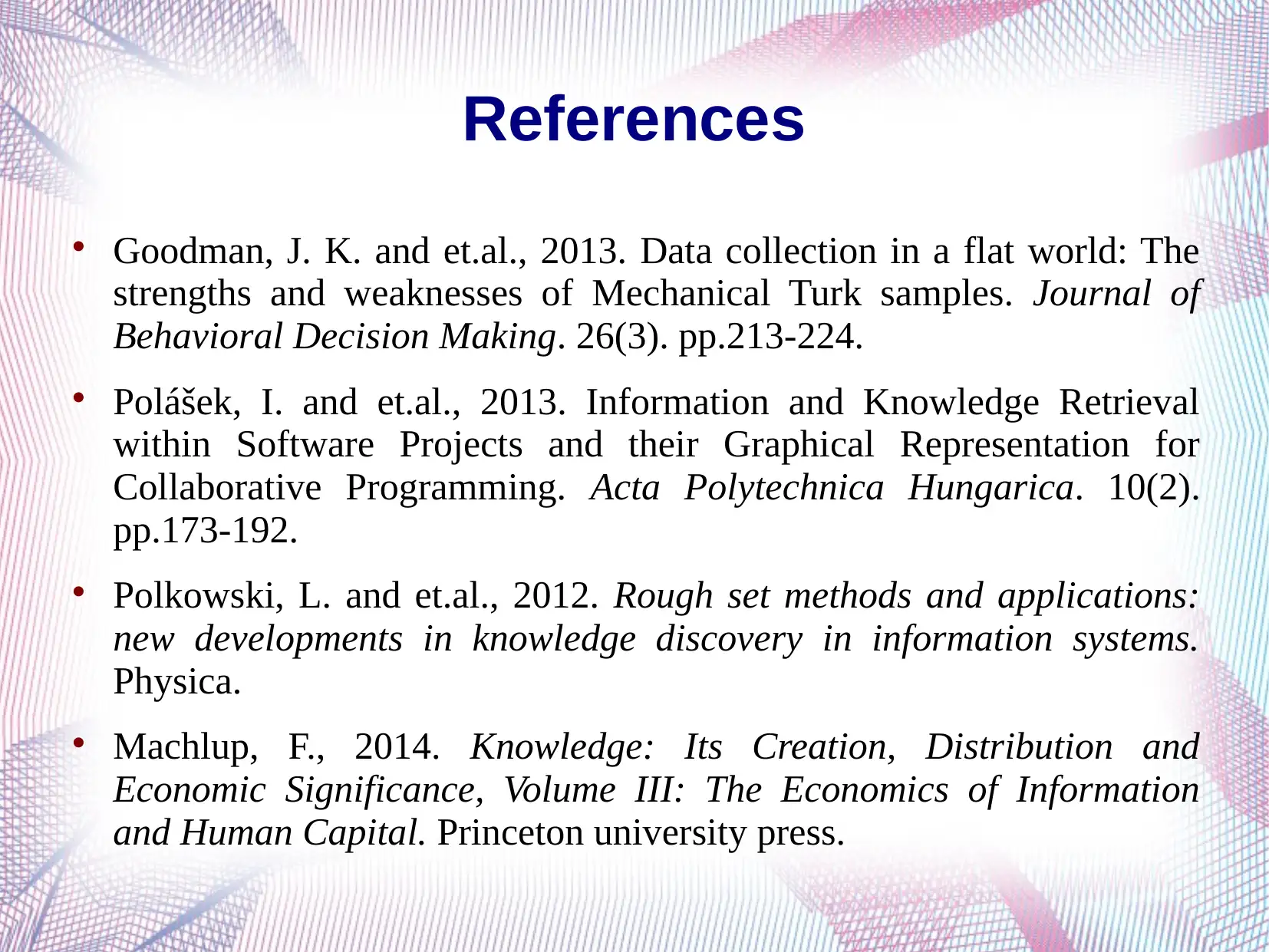
References
Goodman, J. K. and et.al., 2013. Data collection in a flat world: The
strengths and weaknesses of Mechanical Turk samples. Journal of
Behavioral Decision Making. 26(3). pp.213-224.
Polášek, I. and et.al., 2013. Information and Knowledge Retrieval
within Software Projects and their Graphical Representation for
Collaborative Programming. Acta Polytechnica Hungarica. 10(2).
pp.173-192.
Polkowski, L. and et.al., 2012. Rough set methods and applications:
new developments in knowledge discovery in information systems.
Physica.
Machlup, F., 2014. Knowledge: Its Creation, Distribution and
Economic Significance, Volume III: The Economics of Information
and Human Capital. Princeton university press.
Goodman, J. K. and et.al., 2013. Data collection in a flat world: The
strengths and weaknesses of Mechanical Turk samples. Journal of
Behavioral Decision Making. 26(3). pp.213-224.
Polášek, I. and et.al., 2013. Information and Knowledge Retrieval
within Software Projects and their Graphical Representation for
Collaborative Programming. Acta Polytechnica Hungarica. 10(2).
pp.173-192.
Polkowski, L. and et.al., 2012. Rough set methods and applications:
new developments in knowledge discovery in information systems.
Physica.
Machlup, F., 2014. Knowledge: Its Creation, Distribution and
Economic Significance, Volume III: The Economics of Information
and Human Capital. Princeton university press.
⊘ This is a preview!⊘
Do you want full access?
Subscribe today to unlock all pages.

Trusted by 1+ million students worldwide
1 out of 12
Related Documents
Your All-in-One AI-Powered Toolkit for Academic Success.
+13062052269
info@desklib.com
Available 24*7 on WhatsApp / Email
![[object Object]](/_next/static/media/star-bottom.7253800d.svg)
Unlock your academic potential
Copyright © 2020–2025 A2Z Services. All Rights Reserved. Developed and managed by ZUCOL.





